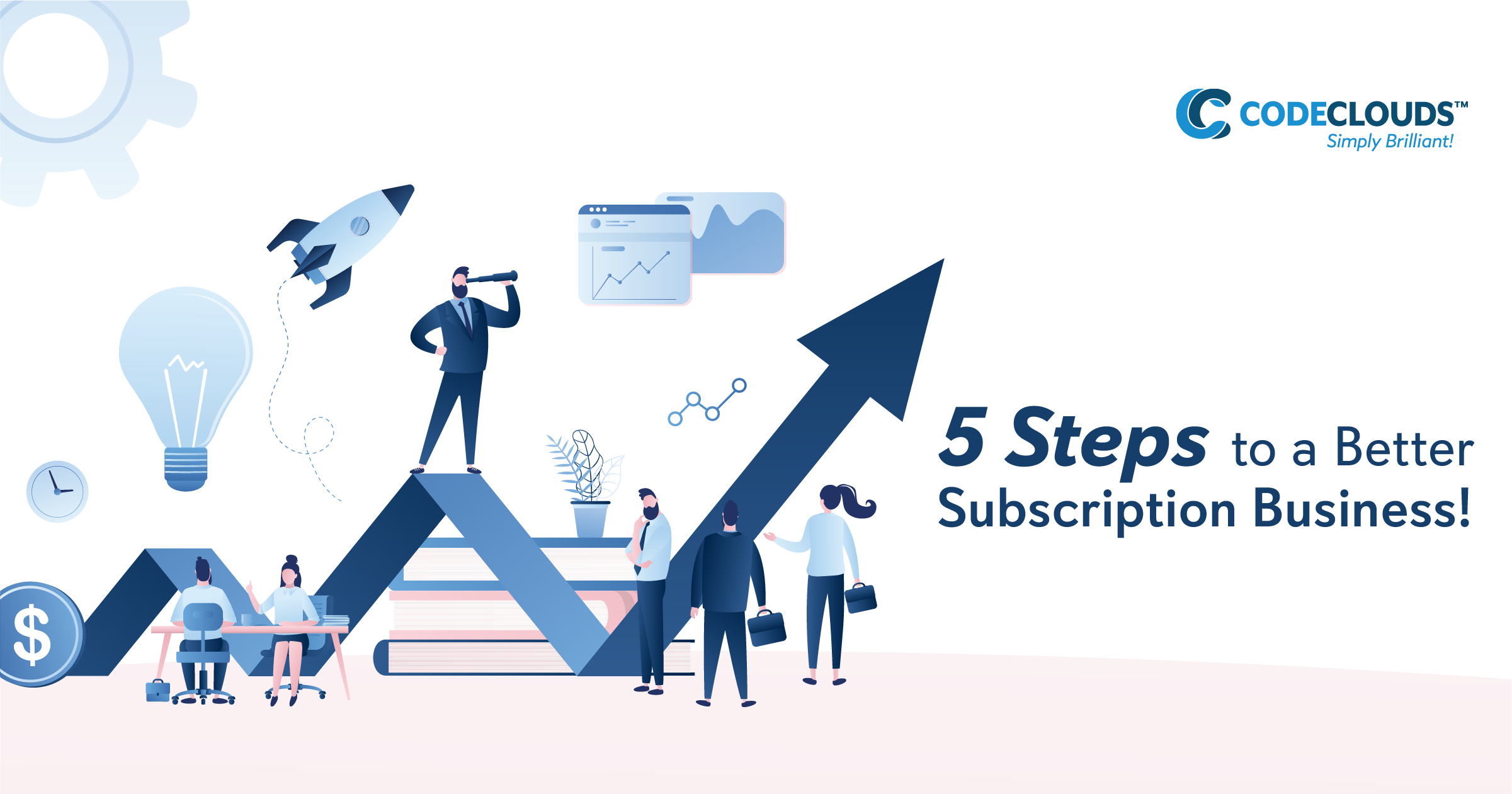Overview
Subscription services are simply everywhere. No longer are subscriptions thought of the way to get your favourite magazine each month or entry to your local gym. The subscription model has fused with eCommerce and subscriptions are now how we consume almost everything, from the way we access music, receive updates about a business, or even receive a new eco-friendly toothbrush with each changing season.
 eCommerce stores will either be based around a subscription model, or have a subscription model as part of the way they make sales. Subscriptions don’t have to be directly related to sales, we can take newsletter subscriptions received via email as an example, they may not cost the customer anything to sign-up, but their objective is to eventually convert readers to customers.
eCommerce stores will either be based around a subscription model, or have a subscription model as part of the way they make sales. Subscriptions don’t have to be directly related to sales, we can take newsletter subscriptions received via email as an example, they may not cost the customer anything to sign-up, but their objective is to eventually convert readers to customers.You could have the best subscription service or subscription business in your industry, which is great, but you first need to get things off the ground by convincing people to actually subscribe. Doing this requires an understanding of your subscription model and why it’s valuable to the user, what sets the subscription apart from other alternatives (your competition) and how you mix marketing tactics with your eCommerce site’s user experience.
Below, we’ll be going over 5 different ways you can gain more subscribers.
Use Discounts and Promotions, But Most Importantly… One Click Upsell!
Your subscription is most likely a deal within itself, here we are talking about adding something additional. Here, we will focus on upselling.

Upselling involves providing a return customer with another offer that can provide them with more value. Upselling is popular for two reasons: it’s a lot cheaper to upsell rather than find a new customer, and upselling saves your business from having to bombard your audience with other ads that can annoy possible subscribers. Instead, upselling allows a current customer to figure out that the subscription option you’re offering will serve them better. Customer subscriptions are much like personal development, the information is out there, but things are much more effective when the individual comes to the realization on their own.
Some examples of upselling are:
- Offering a greater discount for a long-term subscription
- Making a period of time free for signing up for a long-term subscription
- Offering subscription upgrades for potential long-term subscribers who will eventually need more (i.e. Subscribe & Save)
But, developing upselling strategies requires you and your subscriptions to tick a few boxes first:
- Keep a low entry level: Many initial subscriptions are free or are at least very low cost. Why? Because most users don’t want to invest too much in your subscription yet and setting a low entry level at least gives them the confidence to give things a go.Eventually the user should feel that there is something missing in their current subscription and the new feature they need lies within the next level up. This way, your subscriptions grow with the user.
- Add a self service customer portal: This means that your user is able to upgrade from their current subscription at any time, either by interacting with your app or website. But, they don’t actually need to contact you first.
- Listen to your customers: What new challengers are your customers facing? What features do they wish your subscriptions had? If they provide feedback via surveying, or other engagement, implement that feedback where appropriate.
Improve Your User Experience and Functionality
Ensure your user experience has been designed specifically for your subscription service. Here’s some tips to improve things:
-
- Make your subscription button obvious: Whether you’re saying ‘Subscribe Now’ or ‘Subscribe Here’ it needs to stand out on your web pages. This doesn’t mean you should turn it into a blinking neon sign, but it should be distinct from the rest of your web page, many sites will feature their subscription button on their header and footer.

Here, Amazon has a default subscribe and save radio button selected for most grocery and household items.
- Reduce navigation: The subscriptions should be easy to understand and require the least amount of navigation possible to explain. It’s popular to express subscription services in comparison, where it’s easy for the user to see the difference between pricing and features.
- Be transparent: The worst thing for any user is to sign up and then discover a condition that comes with the subscription, any new information after signing up can lose the trust of the user and is often a deal breaker for whether they continue their subscription.
Transparency is especially important when it comes to billing. The user needs to know exactly what they’re paying for and are made aware of any variables that can increase cost. No surprises! You may need to hire an eCommerce developer to implement these changes for you.
Ensure all Your Content Has a Purpose
Ever heard the phrase “content is king?” Part of this phrase is to do with content marketing and its ability to generate new leads and conversions. However, the phrase should really be “valuable content is king” or “content that solves a users problem is king,” these alternatives are not as catchy but they would stop businesses from wasting their time writing content that doesn’t help their target audience.
What is useful content? Whenever a user makes a search query relevant to your subscription services, they want an answer to that query. If your content does not provide a solution, or the reader does not gain anything, the piece is not finished.
Content should align with your brand and be engaging, entertaining or informative in a way that’s specific to your target audience. It may promote one of your subscriptions, it should always promote your brand and encourage users to be interested in it.
Content has many different forms, mainly we think of content as articles in a blog, but it can also be a video, static image, podcast, social media posts, or an infographic.
Our recommendation when deciding what content you should create is to play to your strengths. If you’ve got content to stick to your strengths, this could be specific to you as a business owner or those you have in-staff. Content writing is the most common, but if someone has a talent for public speaking, or video editing, then you may gain more value from creating a video.
Create A Value Proposition With Your Subscription
A value proposition is the ingredient or ingredients within your subscription that solves a user problem that your competitors can’t. Coming up with an original value proposition can be hard, especially if you’re in a saturated industry. Luckily, you don’t have to come up with an original value proposition to gain more subscribers.
A common proposition to do with subscriptions is that your subscription is cost-effective. Subscribing means you get more for less, or the user saves money over time by signing up for a longer period. This is one common concept associated with creating a value proposition. Consider the following concepts and see if they’re applicable to your subscription:
Convenience: Can your subscription make your consumers’ life easier? Will your subscription remove a step the user would otherwise have to do themselves? Take taxi-hailing apps as an example, they removed the need for the consumer to call a driver, tell the driver where to go and pay in person.
Flexibility: Your subscription doesn’t have to be strict, it can have variables that can better fit user needs. Different users will need more of something or less of something. This is easier if you’re only looking for under 100 subscribers (more like clients) and you can adjust a subscription case by case. Remember, subscriptions can be good because they often allow users to get more, but users don’t want to pay more for things that they don’t need.
Do More: Can you simply add more to your subscription? Many software or marketing related subscriptions will offer a range of services within their subscription. Therefore, you should ask yourself how you can tick one more box for the user? How can a part of your subscription offer more functionality or more insight than a competitor? It doesn’t have to be a major change, strike a balance between providing extra value to your user and the extra cost or time you will have to invest in your subscription.
An Alternative to Common Shopify Subscription Apps!
As you may know, Shopify stopped allowing checkout page customization through 3rd party checkout providers as part of a TOS update earlier this year. This means while subscriptions are technically supported through Shopify, the functionality is very limited compared to what 3rd party apps used to provide.

Many businesses are changing platforms, and we provide the best alternative to Shopify subscription apps – Unify Checkout + Sticky.io. Unify can be integrated with WordPress/Woocommerce, Wix, Squarespace, BigCommerce, and many more platforms.
If you’re an eCommerce business owner with little to no coding experience, it’s easiest to install a platform that can simplify how you manage subscriptions, build sales funnels, implement upsells or cross sells and customize your checkout. Unify Checkout was created for subscription based businesses who want a leading subscription service, yet don’t have the technical expertise to optimize their service – Unify Checkout bridges that gap!
Share this article
231 reads
Similar Reads








